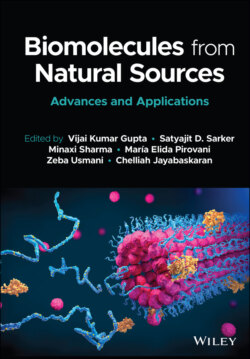Читать книгу Biomolecules from Natural Sources - Группа авторов - Страница 82
2.6 Biopolymer Type Number 5: Polyisoprenoides 2.6.1 Natural Rubber
ОглавлениеNatural rubber is a cis-1,4-polyisoprene-based biopolymer that has good resilience and damping behavior, but poor chemical resistance and processing capacity. It is collected from the milky secretion (latex) of individual trees, but the Hevea brasiliensis tree is the only important commercial source of natural rubber (sometimes called Pará rubber). Guayuleule is the only other plant under cultivation as a commercial source of rubber (Parthenium argentatum). Tyres, computer components, gloves, toys, shoe soles, elastic bands, flippers, erasers and athletic equipment are well-known uses of natural rubber. It is typically used for applications that need resistance to abrasion/wear; elastic resistance and properties that absorb damping or shock. In the production of synthetic rubber, oil is one of the necessary substituents. Natural rubber has enjoyed a rising market share due to the cost of oil and has become an attractive replacement for synthetic rubber. Since natural rubber has better properties compared to other synthetically manufactured rubber, rubber industries usually use it to enhance properties and extend applications of other rubber materials by blending. A very low level of adherence to other materials has also been documented. Natural rubber blended with virgin and recycled ethylene-propylene-diene monomer has been reported by Hayeemasae et al., the curing rate of natural rubber vulcanization was decreased. This was due to the incompatibility of these materials with natural rubber being cured. However, the maximum torque for the recycled material was increased with the addition of both virgin and recycled EPDM and was even higher. This was due to the higher density of cross-linking implemented by EPDM. Natural rubber is an economically important biopolymer with unparalleled performance characteristics, such as high elasticity, durability and efficient heat dispersion [258, 259]. Normal rubber is poly (cis-1,4-isoprene) 300 to 70000 isoperene molecules are coupled to form an irregular structure that cannot crystallize under normal conditions that mediate the amorphous rubber texture. Normal rubber is poly (cis-1,4-isoprene). Currently, the major rubber producing countries are Thailand, Indonesia, Malaysia, India and the People’s Republic of China, which together account for 89% of the world’s 9.33 million tons of the global rubber production.
